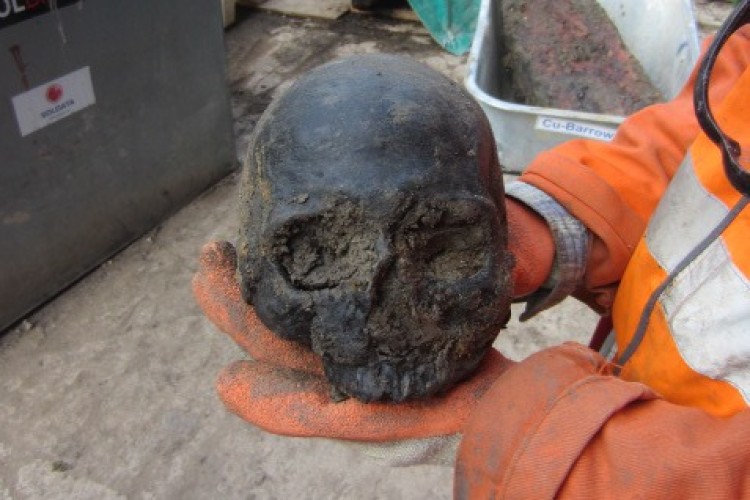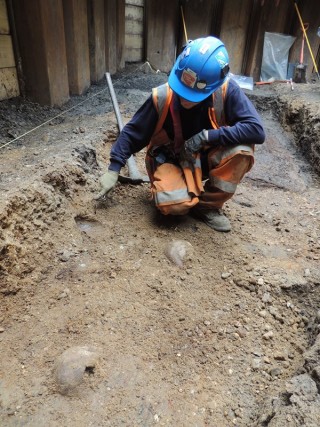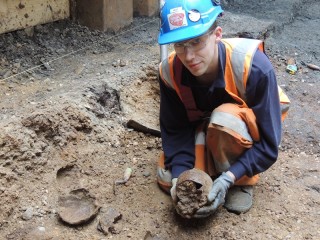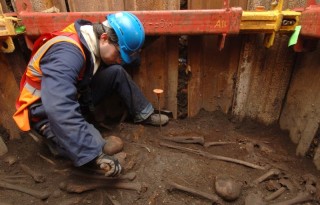Working under the direction of Crossrail’s archaeologists, the construction crew has carefully removed the human skulls along with Roman pottery, which was found in the sediment of the historic river channel of the River Walbrook.
The skulls have been found below the Bedlam burial ground that was established in the 16th Century, where 3,000 skeletons will be carefully removed during major archaeological excavations next year.
For safety reasons, the archaeologists have had to leave the archaeology work to the tunnellers as the skulls were located up to six metres below ground.
Roman skulls have been found along the historic Thames tributary, the River Walbrook, throughout London’s history and led to speculation they were heads decapitated by Queen Boudicca’s rebels during the rebellion against Roman occupation in the 1st Century AD, project’s archaeology team reports.
However, later archaeology suggested that the River Walbrook might have eroded a Roman cemetery under Eldon Street in the Liverpool Street area and the skulls and other bones had been washed downstream.
The latest skulls have been located in clusters indicating they had been caught in a bend in the river. The location of the skulls indicates that they were washed out of the burial ground during Roman times.

Lead archaeologist Jay Carver said: “This is an unexpected and fascinating discovery that reveals another piece in the jigsaw of London’s history. This isn’t the first time that skulls have been found in the bed of the River Walbrook and many early historians suggested these people were killed during the Boudicca rebellion against the Romans. We now think the skulls are possibly from a known Roman burial ground about 50 metres up river from our Liverpool Street station worksite. Their location in the Roman layer indicates they were possibly washed down river during the Roman period.”
The tunnellers have also discovered wooden medieval structures believed to have been part of the walls of the Bedlam burial ground.
Museum of London Archaeology (MOLA) will analyse the finds over the coming months to find out more about the age, sex and diet of the people associated with the Roman skulls.
Crossrail has previously discovered human bone in the foundations of a Roman road that passes through the site which also may have come from the same nearby Roman cemetery.
During the past few months, Crossrail’s archaeologists have made a number of discoveries that have helped piece together London’s history including:
- The discovery of a Mesolithic ‘tool-making factory’ which included 150 pieces of flint, dating some 9,000 years ago, found at North Woolwich;
- Skeletons from a suspected Black Death burial ground in Charterhouse Square near Barbican station;
- The first piece of gold on the project, a 16th Century gold coin that was used as a sequin or pendent, similar to those worn by wealthy aristocrats and royalty, found at Liverpool Street; and
- The first of 3,000 skeletons that will be relocated from the Bedlam burial ground at Liverpool Street.
Since Crossrail construction began in 2009, more than 10,000 archaeology items, spanning more than 55 million years of London’s history, have been found across more than 40 construction sites.
Got a story? Email news@theconstructionindex.co.uk
.png)





